Just that. How much Stan's sealant are you guys running in your 29" tires? This is my first attempt with the tubeless. I'm running Stan's ZTR Arch rims with Maxxis tires.
Reply
Save
Like
1 - 15 of 15 Posts
I've had good luck with 2 scoops in each tire. I'm also running Maxxis Ignitors on Arch rims.
Reply
Save
Like
MichauxYeti said:
I've had good luck with 2 scoops in each tire. I'm also running Maxxis Ignitors on Arch rims.
Click to expand...
That's what I start a new tire with too. I might even add a third if I'm having a hard time seating the tire, and a lot of Stan's has leaked out.
If I'm remounting a tire, I can get by with 1-1.5 scoops.
Reply
Save
Like
In terms of ounces I run three to four ounces (113.4 grams = 4 oz) per tire or slightly less when injecting a tube.
Reply
Save
Like
I started with 3 ounces and was loosing a little too much pressure. So I put another 1/2 ounce per my LBS and things are now really good. I am running Conti Mountain Kings 2.2 on Stans Flows.
Reply
Save
Like
jc280 said:
Just that. How much Stan's sealant are you guys running in your 29" tires? This is my first attempt with the tubeless. I'm running Stan's ZTR Arch rims with Maxxis tires.
Click to expand...
I think we have to remember what it is we are trying too seal.
First, we are sealing the tire/strip interface and the sidewalls. The recommended 2 - 3 ounces is plenty for that purpose. Even with a large volume, thin sidewall tire like the Racing Ralph 2.4 - I've found that 2 ounces does the job quite well.
Second, we want enough sealant in there to seal your ordinary trail debris for punctures - thorns and small sharp things. Again, the recommended 2 ounces seems to tackle this quite well for me. Three ounces would just be extra slosh IMO for my own riding conditions. If I start with 2 ounces, after a few weeks to months, I can add more sealant if I don't hear any "slosh" in there while shaking the wheel. Again, I'm trying to seal thorn punctures where I ride and have yet to not have enough sealant in there to do the job (this is my third season running tubeless). Others may find they need more than the 2 ounces I run (I'll even run less in a smaller volume tire like a Crow or Karma where I usually do 1.5 ounces).
If I start with 2 ounces, after a few weeks to months, I can add more sealant if I don't hear any "slosh" in there while shaking the wheel. Again, I'm trying to seal thorn punctures where I ride and have yet to not have enough sealant in there to do the job (this is my third season running tubeless). Others may find they need more than the 2 ounces I run (I'll even run less in a smaller volume tire like a Crow or Karma where I usually do 1.5 ounces).
Even after sealing something like a Racing Ralph 2.4 and riding it for a month or two, when I pull it off to change tires there is a nice wet film coating the inside of the tire as well as a puddle in reserve to handle all of the thorns. You can certainly add more than 2 - 3 ounces, but I don't see the benefit. I think I would rather top off the sealant with another ounce after a month or so of riding.
Now if you are worried about nails, fishing hooks/lures, or who knows what on some trails - you may want some more liquid in there in hopes it will plug up these larger punctures. Or if you want to recreate the "Path of Death" video for a garage experiment.
Or if you want to recreate the "Path of Death" video for a garage experiment.
BB
See less See more
Reply
Save
Like
I use two scoops in my 29x2.2 Captain Controls. Stan's Arch Rims.
Reply
Save
Like
I use 2.23 to 3.35 ounces.
Reply
Save
Like
BruceBrown said:
Even after sealing something like a Racing Ralph 2.4 and riding it for a month or two, when I pull it off to change tires there is a nice wet film coating the inside of the tire as well as a puddle in reserve to handle all of the thorns. You can certainly add more than 2 - 3 ounces, but I don't see the benefit. I think I would rather top off the sealant with another ounce after a month or so of riding.
BB
Click to expand...
You may not see the benefit, but I sure do. To wit: I-9 SS wheels on DT Swiss rims set up tubeless with Vulpines Feb '08.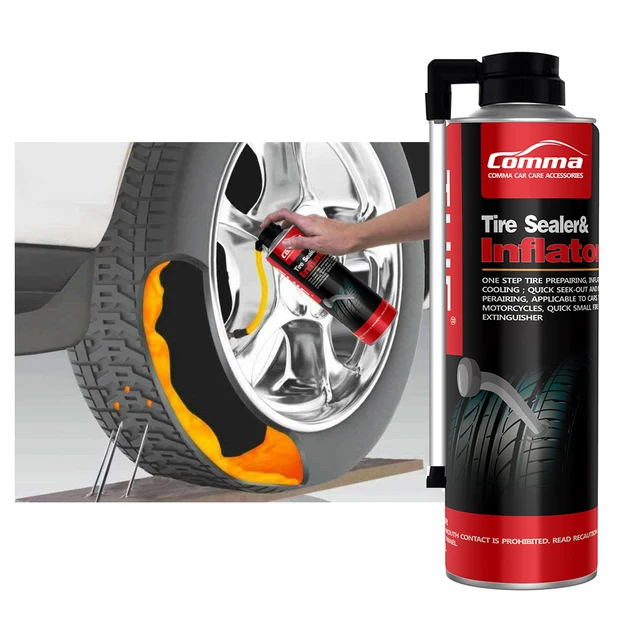 Still holding air and still "sloshing" to date. No topping off necessary.
Still holding air and still "sloshing" to date. No topping off necessary.
That's the kind of "low maintenance" I definitely see a benefit to.
You are after a different result than I am though, to be fair. Your "racing-centric" advice makes sense. I don't race much, and I need a reliable, "no muss no fuss" result from my tubeless set ups. Two ways to skin the cat, dont cha think?
See less See more
Reply
Save
Like
flargle said:
I use 2.23 to 3.35 ounces.
Click to expand...
Is it really safe to use less than 2.24 ounces
Reply
Save
Like
~ 4 ounces for a wide tire (>2.2) and 3 ounces for a narrow tire (<2.2).
Reply
Save
Like
3 scoops per wheel for me :thumbsup:
SPP
Reply
Save
Like
about 4 shot glasses full
honestly, I don't measure
experience has taught me that "about that much" is good
on a new tire you "loose" some doing the initial sealing
I just pour some in out of the bottle, filling about 3-4" long
when it's hot in the Texas summer it dries faster so a little extra is just good insurance and I don't generally have to add more, there's usually some left when I replace tires
See less See more
Reply
Save
Like
yeah same for me. I just start pouring it in until it looks good. Hot SoCal weather burns it up fast so I add more for good measure.
I just start pouring it in until it looks good. Hot SoCal weather burns it up fast so I add more for good measure.
Reply
Save
Like
Guitar Ted said:
You may not see the benefit, but I sure do. To wit: I-9 SS wheels on DT Swiss rims set up tubeless with Vulpines Feb '08. Still holding air and still "sloshing" to date. No topping off necessary.
Click to expand...
Flows with Rampage Rear and MK front. 2 scoops dried up in 2 months, just 1 big booger left. I'm in San Francisco, so it's relatively damp and not too hot either.
Going to go to Wadsters Special Sauce once the liquid latex arrives.
See less See more
Reply
Save
Like
1 - 15 of 15 Posts
Join the discussion
Continue with Facebook
Continue with Google
or sign up with email
Tubeless tire setups are becoming increasingly popular among mountain bike, gravel, and even road cyclists, and for good reason: a tire that seals its own punctures is pretty convenient. So if you’re going to run tubeless tires, you’ll definitely need the key ingredient that makes that magic happen—that is, tubeless tire sealant.
So if you’re going to run tubeless tires, you’ll definitely need the key ingredient that makes that magic happen—that is, tubeless tire sealant.
We spoke with Drew Esherick, team mechanic for Pivot Maxxis p/b Stan’s NoTubes cyclocross team, to get expert advice on how to use tubeless tire sealant and more.
(Haven’t jumped on the tubeless train yet? Here’s everything you need to know about tubeless tires to decide if they’re right for you.)
Tubeless tire sealant is the liquid that goes inside tubeless tires and automatically plugs punctures as they happen. Most sealant is made from a natural latex base that dries inside a puncture when it’s exposed to air. There are particulates suspended in the latex—different brands use different materials—which is what gives the latex something to stick to in order to clog the hole instead of seeping out.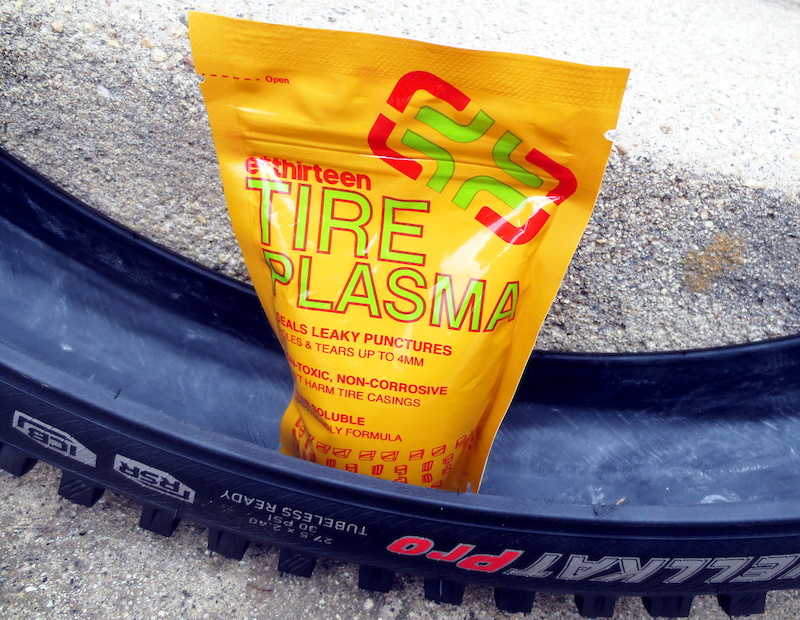
→ No matter what you need to improve in your riding life, find it with Bicycling All Access!
Race sealant is a version that has more and larger particulates floating in the latex than regular sealant, allowing it to coagulate much faster and fix larger punctures more quickly. But it also requires replacing a lot more frequently, so it’s best for riders who race regularly.
Trevor Raab
It depends on whether you’re setting up your tires for the first time or just topping them off.
“The imperfections in a new tire are going to soak up some of the sealant,” says Esherick. So when you’re doing an initial setup, you use about double the sealant you would when you’re just topping it off.
For a brand-new gravel or mountain bike tire, use about four or five ounces, and use two ounces for a road tire.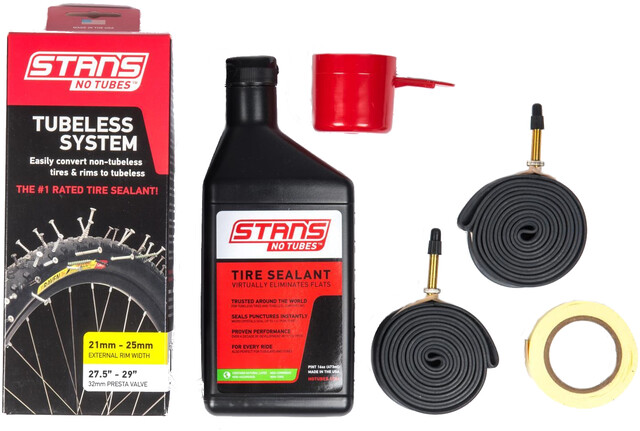 These are approximate measurements, so don’t worry about getting it exactly right. “There’s no such thing as too much,” says Esherick. But it’s very common to use too little then wonder why your sealant “doesn’t work,” so be generous with it.
These are approximate measurements, so don’t worry about getting it exactly right. “There’s no such thing as too much,” says Esherick. But it’s very common to use too little then wonder why your sealant “doesn’t work,” so be generous with it.
$34 at Competitive Cyclist
Credit: Stan's No Tubes$10 at Competitive Cyclist
Now 15% Off
$34 at Amazon
Credit: Muc-Off$31 at Amazon
The least messy way to get sealant into your tires is through the valve stem. To do this, you’ll need a valve-core remover to remove the valve core and a sealant injector to measure it out of the container and squirt it though the valve, or a pre-measured bottle with an injector tip.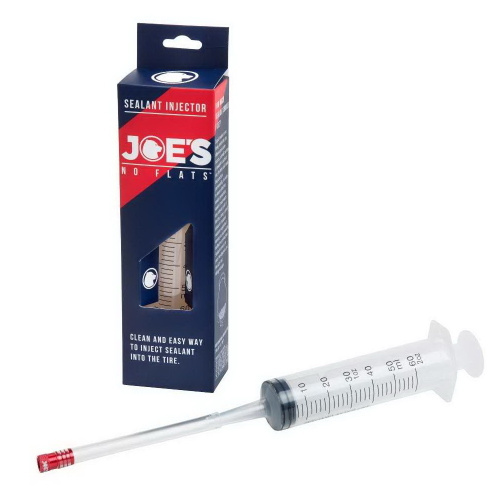 If you don’t have either of these, you can separate a section of your tire from the rim and just pour it in.
If you don’t have either of these, you can separate a section of your tire from the rim and just pour it in.
Trevor Raab
Trevor Raab
If you’re pouring it in through an opening in the tire, Esherick suggests pouring the sealant in with the opening at the bottom of the tire, and then turning the wheel slowly to let the sealant run down inside the part of the tire that’s fully installed. This will allow you to finish installing that last bit of bead without making a mess. If you’re using race sealant, the larger coagulative particles are too big to fit through the valve without clogging it, so you’ll always pour it into the tire this way.
After adding the sealant, replace the valve core and inflate the tire to its specified pressure quickly to get the bead to settle in place on the rim. (Do not over-inflate; that can lead to explosions!)
If your sealant is leaking out of a larger puncture rather than filling it, you can plug it by hand using a tubeless tire plug. These are little rubber strips you poke directly into the hole with a needle. The rubber will get stuck in the tire and react with the chemicals in the sealant and expand to plug the hole. And yes, you can put a bunch in your tire if you have multiple holes.
These are little rubber strips you poke directly into the hole with a needle. The rubber will get stuck in the tire and react with the chemicals in the sealant and expand to plug the hole. And yes, you can put a bunch in your tire if you have multiple holes.
If a puncture doesn’t seal you can use a plug kit to help seal the hole.
Trevor RaabIf you get a gash in your tire that’s too big for the sealant to handle or even to plug by hand, you can remove the tubeless valve and install a regular inner tube on the rim to get home. Another thing to keep in mind is that sometimes sealant takes a bit of time to fix larger holes: You might need to pull off the trail and let it pool around the puncture for a minute or two so it can do it’s thing.
“If your tire gets a puncture that just won’t seal, it’s possible you are riding with too much pressure,” Esherick says. “And if you’re doing that, you’re not getting the benefit of tubeless tires, which is to run a lower pressure that’s more comfortable and has better traction.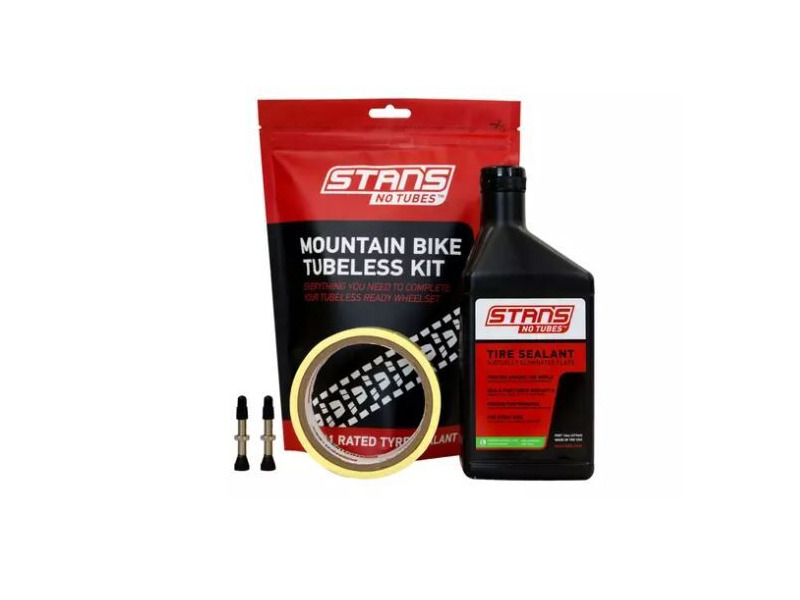 ”
”
$155 at Trek Bikes
$67 at Amazon
Keep It Clean
$10 at notubes.com
Precisely measure sealant and install with no mess.
Mid-Ride Repair
$60 at dynaplug.com
Brass-tipped plugs make fixing bigger punctures easy.
“Bicycle tires are really thin and porous, which makes sealant evaporate over time and dry out,” Esherick says. That’s why it’s necessary to top off your sealant about every two to three months, even if you haven’t gotten a lot of punctures.
If your tire looks like this it’s time to clean it out and add some fresh sealant.
Trevor RaabAccording to Esherick, two ounces is the right amount of sealant for topping off gravel tires all the way up to 2.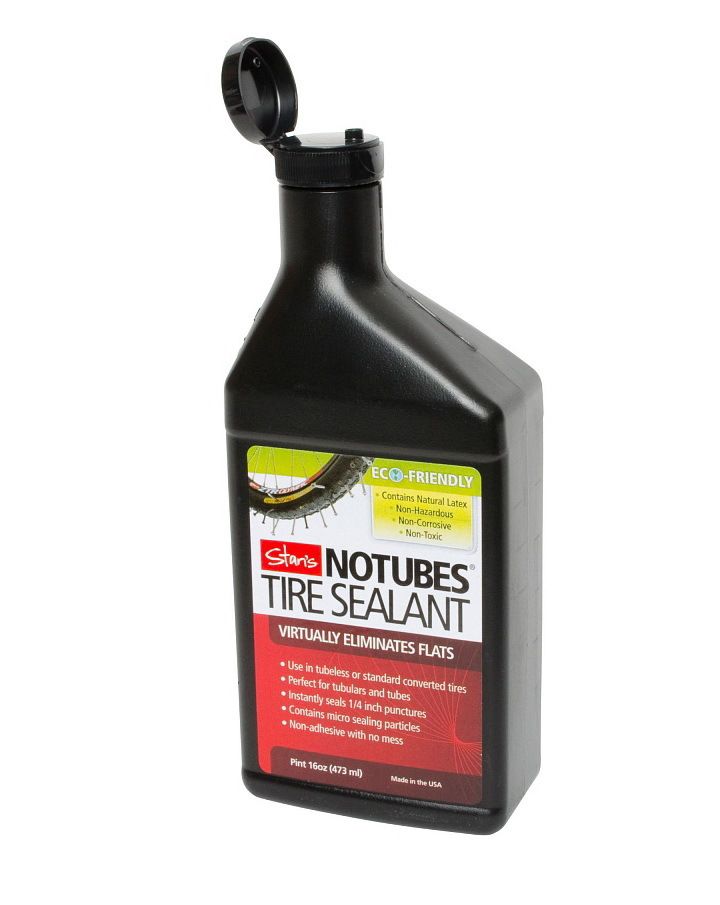 5-inch mountain bike tires. “If you’re up in the 2.5- to 2.6-inch range, you might want three ounces, and 2.7- to 2.8-inch tires require about four ounces,” Esherick says. “As you get a larger volume tire, you’re going to want a little bit more sealant in there.” Two ounces is enough for road tires for the first time, as well as plenty whenever you top them off.
5-inch mountain bike tires. “If you’re up in the 2.5- to 2.6-inch range, you might want three ounces, and 2.7- to 2.8-inch tires require about four ounces,” Esherick says. “As you get a larger volume tire, you’re going to want a little bit more sealant in there.” Two ounces is enough for road tires for the first time, as well as plenty whenever you top them off.
Try to, at least once a year, take your tire completely off the rim to scrape out the dried sealant and start fresh. This preventative maintenance will keep your tires turning in time.
Riley Missel
Riley is a writer and outdoor adventure guide currently based in Tucson, Arizona where she leads mountain bike rides, rock climbing, and hiking trips. In her spare time, she writes stories and reviews outdoor and fitness gear. Find her writing in publications including Outside, Lonely Planet, SHAPE, Bicycling, Runner’s World, and others.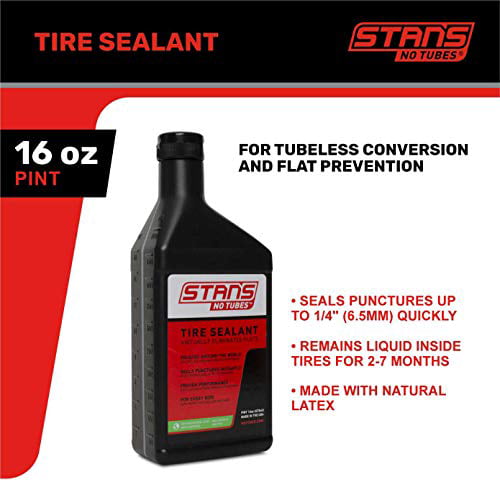 When she’s not playing in the mountains, she’s probably laying down somewhere or eating (or both).
When she’s not playing in the mountains, she’s probably laying down somewhere or eating (or both).
Tire sealant is very popular in the automotive chemicals market. This tool has appeared recently, but has already won many fans. With the help of sealant, you can quickly eliminate a hole in the wheel in order to easily get to the tire fitting.
Contents:
There are various types of sealants on the market that are suitable for sealing bicycle and car inner tubes, as well as for repairing tubeless tires.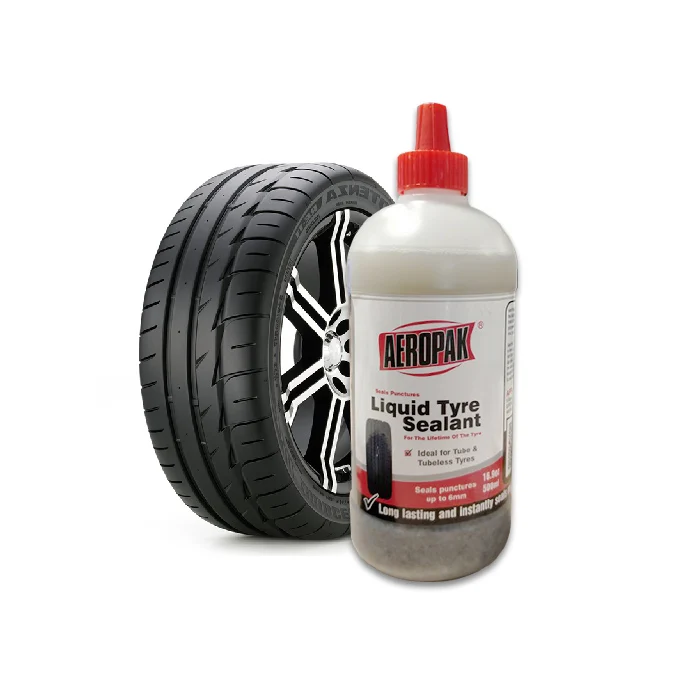 Depending on the composition, the puncture sealant can be as follows:
Depending on the composition, the puncture sealant can be as follows:
Most often, tire bead sealant is produced in cylinders filled with the main compound. Also, these products are produced in metal containers with a brush. Sometimes a set of a patch and a napkin soaked in a degreaser is attached to the sealant. According to the purpose, tire sealants can be divided into repair (emergency) and preventive.
back to contents ↑
You have to use such bead sealants when a wheel puncture has already happened, urgent tire repair is required.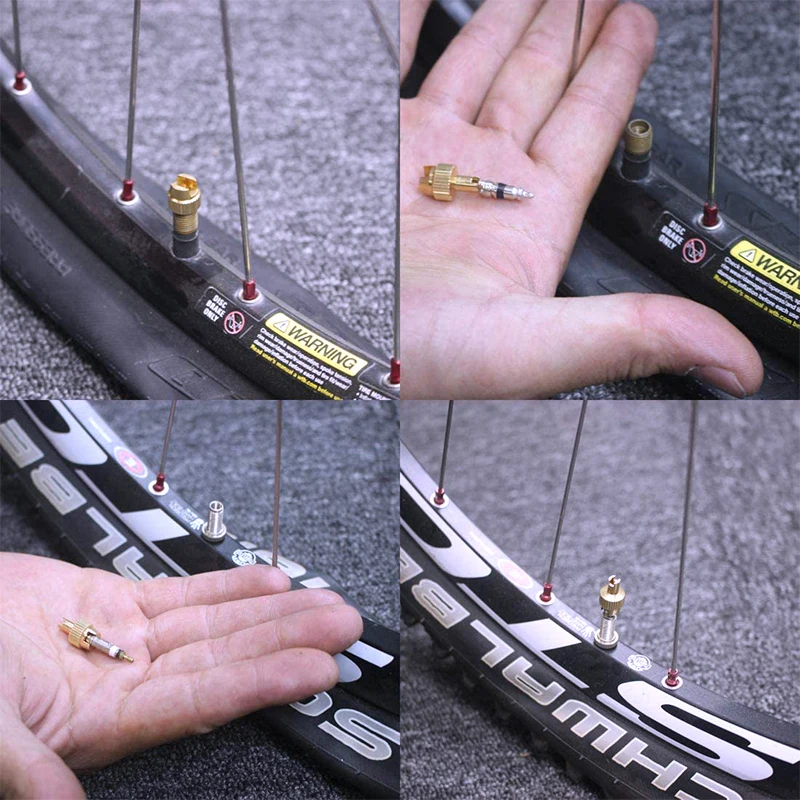 Most compounds work with a completely flat tire, are introduced through a nipple. Repair sealants most often have an aerosol form with a tube tip, so applying them with your own hands is easy and convenient. Gradually, due to the increase in pressure, the tire begins to gain volume, restoring its normal shape, and foam is released from the punctured areas. The rest of the product in liquid form does not always need to be removed from the wheel, most often it is recommended to leave it to prevent new defects.
Most compounds work with a completely flat tire, are introduced through a nipple. Repair sealants most often have an aerosol form with a tube tip, so applying them with your own hands is easy and convenient. Gradually, due to the increase in pressure, the tire begins to gain volume, restoring its normal shape, and foam is released from the punctured areas. The rest of the product in liquid form does not always need to be removed from the wheel, most often it is recommended to leave it to prevent new defects.
back to contents ↑
These products are designed to prevent punctures in tube and tubeless tires. They are also poured through the nipple, and when the car moves, they are evenly distributed inside the tire under the action of centrifugal force. If a hole does happen, the pressure in the tubeless tire will remain the same, because the sealant will rush to the hole and seal it. In the presence of a chamber, the composition will be in an air cushion between the tread layer and the balloon, working in a similar way.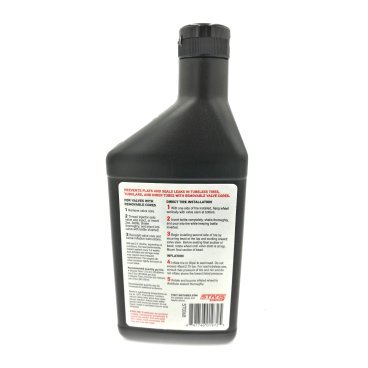
Some sealants have additional features:
The last mentioned property is due to the fact that the wheels with chambers are able to heat up due to the presence of an air gap, and the sealant cools the tread due to the low boiling point.
back to contents ↑
To purchase a really high-quality tire sealant, you need to consider the following recommendations:
back to contents ↑
sealant All tire sealants come with a manufacturer's instruction that explains in detail the procedure. For most products, the steps are as follows:
The first ten kilometers after the repair, you need to move at low speed: this will help the compound to be better distributed inside the tire. After a minor damage, you can continue to use the wheel, and with a serious puncture, it is better to get to the auto repair shop as soon as possible. You need to check the tire pressure again after 10-20 km to make sure that there is no pumping, because some sealants are active for a long time.
Tips for using sealant:
back to contents ↑
Some craftsmen make tire sealant from improvised means. Since almost all factory sealants are based on raw rubber (rubber), you will need to buy such material and dissolve it in gasoline. It is best to purchase imported rubber, which contains a minimum amount of impurities.
Any gasoline that is available will do, it is not necessary to purchase high-octane. Even kerosene, diesel fuel is suitable, although with gasoline the finished product will be of better quality. The exact proportions will have to be selected independently.
Next, cut the rubber into small pieces and gradually add gasoline so that the finished product has a semi-liquid consistency. This sealant can be poured into the tire or, if required, applied to the tire with a brush according to the type of lubricant.
back to contents ↑
Among the variety of sealants for tires, you can get confused: such a large assortment is presented in stores. The following are quality compounds that will help repair a punctured wheel.
“Anti-Puncture” Sealant is a universal sealant suitable for the prevention and repair of holes. The package is enough to close ten punctures no more than 6 mm in diameter. The composition is suitable for tube and tubeless tires. For one wheel 14-15 inches you need 300-330 ml of the product, for 15-16 inches you need 360-420 ml. When repairing SUVs, trucks, you should purchase at least 480 ml of the product.
back to contents ↑
One of the most popular tire sealants, considered ideal for emergency repair of tubeless tires. Hi-Gear Tire Doctor can be used on the road, in case of a hole it will help you get to a car service. This American product is considered reliable, durable, but if possible, they should only seal small punctures.
Liqui Moly brand sealant is based on a rubber solution, excellent for tubeless, tube tires. The composition in the form of a spray is odorless, safe for humans and the environment, it can be used even indoors. Due to the risk of fire, the product must not be handled near naked flames.
This brand of repair compound is designed to repair punctured, cut tires. One bottle is enough for a 16" wheel. When introduced, the rubber compound fills in existing defects, and the remaining mixture becomes the prevention of new cuts, continuing to remain inside the tire. The sealant creates high pressure, which reduces the risk of a flat tire on the road. The disadvantage of the tool is this - it causes some imbalance of the wheels, so after the repair it is better to check the car in the service.
back to contents ↑
The sealant is used for car tires and is not suitable for repairing bicycle and motorcycle inner tubes. It quickly seals small punctures on tires up to 16 inches in diameter. The tool can be used for tubeless and chamber tires, but the efficiency when working with the former is much higher. In cold weather, the sealant must be warmed up well, otherwise the quality of the repair will decrease.
Considered the most popular tire solution for trucks, SUVs and heavy equipment. Its packaging is enough to process a tire with a diameter of 22 inches. The tool is suitable for machines where an automatic pressure control sensor is installed. The quality of the Japanese product is very high, the sealing properties are serious, but the cost cannot be called budgetary.
Inexpensive on-road repair of tubeless tires. It helps to inflate the wheel to a pressure of 1.4 atmospheres and get to the service without any problems. The sealant is available in the form of an aerosol in a convenient container with a hose, it is comfortable and easy to work with it.
back to contents ↑
Effective sealant, allows sealing holes up to 6 mm in diameter. Suitable for old wheels with tubes and tubeless tires. MANNOL Reifen Doctor acts quickly, sets in just a minute, is safe for steel wheels, does not provoke the development of corrosion. Inside the tire, the sealant will be in liquid form, but upon contact with air it immediately polymerizes, therefore it can also be used to prevent punctures. Minus means - low pressure after repair, the need for additional pumping of the wheel with a pump or compressor. The maximum puncture size for sealing is 6 mm.
back to contents ↑
The setting time of this product is also minimal - 1-2 minutes, it is suitable for cars and trucks, other equipment. The price of the sealant is low, but it serves as a temporary remedy until a visit to the tire shop, and the maximum driving speed should not exceed 20 km / h.
Latex-based sealant, has a temporary effect until a trip to a car service. After the bay, you need to drive at least 5 km at a speed of 35 km / h in order to distribute the compound on the inner surface of the tire. The sealant will not cope with large punctures, so it is not suitable for holes larger than 4-6 mm in diameter.
back to contents ↑
Runway Sealant is suitable for motorcycle, bicycle and car tyres. It is sold in a can with an extension hose, the volume of which is 650 ml, which is enough to repair two wheels. Due to the nature of the composition, do not allow the product to come into contact with the skin or mucous membranes!
back to contents ↑
Easy to use, fast acting and effective product. It is completely safe and non-toxic, easily copes with holes and cracks up to 5 mm in size, suitable for trucks, cars and bicycles. Sealant is ideal for use on the road as an emergency tool, although the "patch" made by him will be quite durable.
Sealant produced by one of the most famous brands of tires, adapted to all car tires. It is based on latex, while there are no harmful additives, toxic impurities. In addition to safety for humans, the sealant is characterized by the absence of a destructive effect on the wheels. The composition allows you to do without a spare tire, carrying out repairs in emergency conditions.
back to contents ↑
This American made product is valued by consumers for its high quality. It copes well with tire damage, has a more liquid texture than analogues, so it quickly spreads over the inner surface of the tire. The effectiveness and long service life of the sealant (up to 7 months) are due to the presence of natural rubber and composite microcrystals in the composition.
Repairs tire punctures up to 1 cm in diameter, sealing air leaks by forming a “plug”. Made on the basis of latex, it is a thick composite solution with almost no smell. The sealant is suitable for large cars, trucks. To restore pressure, you need to have a pump or compressor with you.
Bead Sealer Rossvik is used only for small cuts up to 3 mm in diameter. It involves the external application of the composition with a brush in 3 layers with intermediate drying with a building hair dryer, which is a rather big inconvenience. Typically, this sealant is used in auto repair shops.
Holts Tyreweld sealing compound allows emergency wheel repairs to be carried out quickly and reliably. This polymer product is harmless to tires, tubes, rims, seals punctures up to 6 mm in diameter.
Sealant is recommended for every car owner who does not have a spare wheel. The tool will eliminate the need to buy it and allow you to safely get to the car service, besides it will be an excellent measure to prevent punctures during preventive use.
Contents of the article
Good day to everyone! We continue talking about useful and sometimes irreplaceable things that every car owner should have at hand. Today we will talk about tire sealant. This is a means to protect against punctures and get out of unforeseen situations.
Agree that when traveling, the most common breakdown is a tire puncture. This is true for both tube and tubeless tires. For each type, there are special sealants that are easy to use with your own hands.
Tire sealant or tire sealant, call it what you will, is a special mixture that must be poured into the inside of the wheel. With its help, the puncture is, as it were, sealed from the inside.
Sealants are divided into two types:
They can be used not only for repairing punctured car tires, but also for bicycles, mopeds and large special vehicles.
There are also liquid sealants that need to be poured into the wheel without pumping it up. The compressor will come in handy if you need to increase the pressure a little. But their use is problematic, and the advantages are much less compared to aerosol. Therefore, in the top now it is the aerosol type of sealant.
If you have tubeless wheels, I advise you to purchase wheel seals. These are special bead sealants that cope with minor damage and extend their service life.
The main purpose of using sealant is to repair damaged wheels so that you can get to the service station or your garage.
Do not rely on the properties of the composition, continuing to operate the car with a puncture in the tires. But on a bike this is practiced. Many have already forgotten what patches for holes are. Modern tire sealants perfectly replace them.
When using this puncture repair product, you have a limited number of kilometers that can be covered by the car. Most of the trains are focused on 5-15 kilometers. And you need to move at the same time no faster than 50 kilometers per hour.
In addition to the obvious advantages, sealants have their drawbacks. For example, a tool can close a hole in a tire only in the area of \u200b\u200bthe projector. That is, they are useless for the sidewalls. If a puncture happens there, you will have to change the wheel.
Plus, the tool will not be of any use if the tire rim is deformed. Although practice and reviews of the drivers themselves show that lateral types of damage are rare. So the presence of sealant in the trunk justifies the cost of buying it. In certain situations, this emergency repair compound can become a real lifesaver. And prophylactic has its advantages and a reason to take advantage of it.
Well, you managed to buy a sealant in Walmart or any other store. In terms of brands, I don't have specific preferences or recommendations. The test showed the properties of the following compositions from the best side:
And already buy what you think is best suited for your car and wallet. However, the price may vary.
If you have this tool, you need to figure out how to do it right and get the most out of the properties of the sealant.
I have prepared a little instruction for you. I hope that after reading it, you will understand how to use tire sealants, and what are the nuances of their use.
Instructions may vary slightly depending on manufacturer and sealant. But the procedure is always the same. Well, the way I painted it.
If you are using a simple non-aerosol type sealant, then follow the same instructions with a slight adjustment. When you have filled the product, scroll the rim several times. This will allow the drug to be evenly distributed over the inner surface.
The disadvantage of the non-aerosol type is the need to use a jack and a flat tire pump. Agree that it is much easier to bleed excess air than to get the pump, connect it and pump it up.
No wonder aerosol mixtures have become so popular.
Finally, I'll tell you what exactly is used inside the cylinder.
All sealants are based on the fact that when they get inside the wheels, they seal up the breakdowns and keep the air inside. Centrifugal force evenly distributes the agent.
So what is the remedy there? Get to the point, comrade, you call me! Fine.